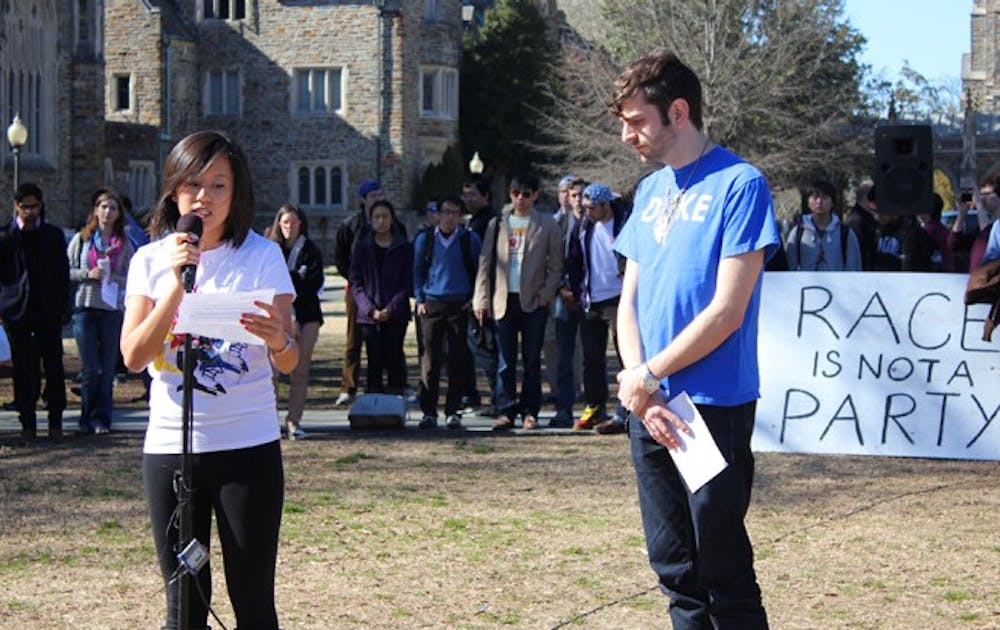Student activism has always been a facet of the University, however in the past couple of years there has been an uptick of student demonstrations.
Although activism traces as far back as 1934, student activism became a more regular aspect of Duke culture in the 1960s. In 1967, students protested segregation on campus by holding a sit-in in the Allen Building. Following the assassination of Martin Luther King Jr. in 1968, students would hold a massive silent vigil and peaceful protest on the Main West Quadrangle in support of racial equality and labor rights on campus. Activism steadily became a more regular aspect of Duke culture, as marked by teach-ins that protested the Vietnam War and an anti-draft rally in 1980.
Flash forward to the twenty-first century and student activism is stronger than ever. In 2000, students successfully pushed the University to change its policy regarding its contracts with companies that use sweatshop labor. Student protests also pushed the University to eliminate the one-year statue of limitations for reporting sexual assault and brought gender-neutral housing to campus.
In the past year alone, student protest has resulted in massive change. In February, the “Race is not a Party” student-led protest at the West Campus bus stop drew attention to racial insensitivity on campus. The protest drew national media attention and inspired the creation of a student-led coalition to improve race relations. Most recently, student activism led the University to add sexual reassignment surgery to the student health plan.
“We’ve always had a very strong activism ethic at Duke as a school, and it’s in our blood as Dukies,” said senior Jacob Tobia, who has led several campus campaigns, particularly on issues affecting the LGBTQ community.
Vice President for Student Affairs Larry Moneta said that since he arrived at Duke in 2001, he has seen a dramatic increase in student activists on campus.
“I’ve worked at six universities, and none have been more involved than Duke,” Moneta said.
He added that Duke rivals its peer institutions for its level of activism and civil engagement.
“People are starting to pay attention not because students are more outspoken, but because the vocal students have found ways to publicize and reach the larger Duke community,” Ting-Ting Zhou, Trinity ’13 and former leader in gender equality and race relations movements on campus, wrote in an email June 24.
Junior Shannon Potter, the founder of Duke’s chapter of Students for Education Reform, said that some activists complain about the hindrances caused by administrators and the occasional blockage in the University’s bureaucratic system. She noted, however, that there are other helpful people to contact.
Potter also noted that every student can find a cause that fits their interests. Even if an issue does not attract the attention of the entire student body, it can still carry weight.
“[I work with] education tied to North Carolina as a state and lots of students not from here might have a hard time feeling connected to the issue,” she said.
If a movement is small, that should not discourage students from voicing their concerns and advocating for change, Tobia noted.
“If I had to say two things to incoming first years, the first is that I think people should check their expectations at the door because Duke’s reputation does not match up with the reality on the ground,” he said. “The second thing I’d want to say is, if you see something you want to influence on campus, jump right in.”
Get The Chronicle straight to your inbox
Signup for our weekly newsletter. Cancel at any time.

